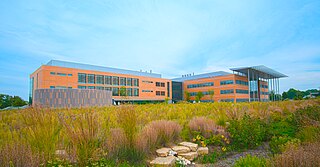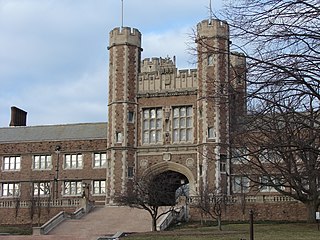Washington University's origins were in seventeen St. Louis business, political, and religious leaders concerned by the lack of institutions of higher learning in the Midwest. The effort to found the university was spearheaded by Missouri State Senator Wayman Crow, and Unitarian minister William Greenleaf Eliot, grandfather of the Nobel Prize laureate poet T. S. Eliot. Its first chancellor was Joseph Gibson Hoyt. Crow secured the university charter from the Missouri State Legislature in 1853 and handled further political maneuvering. While Eliot was in charge of raising funds for the university, he accepted the position as President of the Board of Trustees. Early on Eliot was able to solicit some support from the local business community, including John O'Fallon, one of the wealthiest people in St. Louis, even briefly considering naming the university the O'Fallon Institute. However, Eliot failed in securing a permanent endowment. In fact Wash U is unique among other American universities, in not having any prior financial endowment to begin with; the school had no religious backing, wealthy patron, or government support. Therefore, financial problems plagued the university for several decades after its founding.
Contents

The name of the university was still unclear; in the three years following its inspection the university bore three different names. The board first approved Eliot Seminary but this title was eventually replaced in favor of the Washington Institute, because of William Eliot's stiff opposition to the name. Not only was Eliot personally uncomfortable with the idea of naming a university after himself, but he also objected to the establishment of a seminary which would inherently be charged with teaching a religious faith, in favor of a purely non-sectarian university. [1] Under pressure from Eliot, the Board of Trustees created a task force charged with naming the university, headed by Samuel Treat. Several months later Treat's committee proposed naming the University the Washington Institute, after the nation's first president George Washington. However, in the midst of finance problems the Board of Trustees, voted to name the university the O'Fallon Institute in order to secure funds from John O'Fallon, the wealthiest individual in St. Louis. Treat felt the name was unsuitable and persuaded the board to drop the name in favor of the Washington Institute. Naming the University after the nation's first president only six years before the American Civil War during a time of bitter national division was no coincidence on the part of Treat. George Washington was universally admired by Americans and hailed as the father of America, and the country's greatest president. Treat felt that the university should be a force of unity in a strongly the divided Missouri. In 1856 the University amended its name to Washington University. The university's only amended its name once more in 1976 when the board of trustees voted to add the suffix in St. Louis to distinguish the university from the nearly two dozen universities bearing Washington's name. [2]
Although sanctioned as a university, Washington University functioned primarily as a night school located on 17th Street and Washington Avenue, in the heart of the bustling St. Louis Downtown. Once again plagued by the lack of resources, the university was forced to use public buildings. Classes began on October 22, 1854 at the Benton School building. At first the university paid for the evening classes, but as their popularity grew, the bill was transferred to the St. Louis public schools. [3] Eventually the board was able to secure funds for the construction of Academic Hall and a half dozen other buildings. Later the university divided into three departments; the Manual Training School, Smith Academy, and the Mary Institute. In 1867 the university opened the first private non-sectarian law school west of the Mississippi River. By 1882 the university had expanded to numerous departments, housed in buildings spread across downtown St. Louis. However, by the 1890s, the university was on the brink of financial collapse, until Robert Sommers Brookings, president of the Board of Trustees, undertook the task of rebuilding the universities finances, and acquiring land for a new campus. Brookings was instrumental in raising money for the university, since Eliot, the primary fundraiser for the university, had died.












